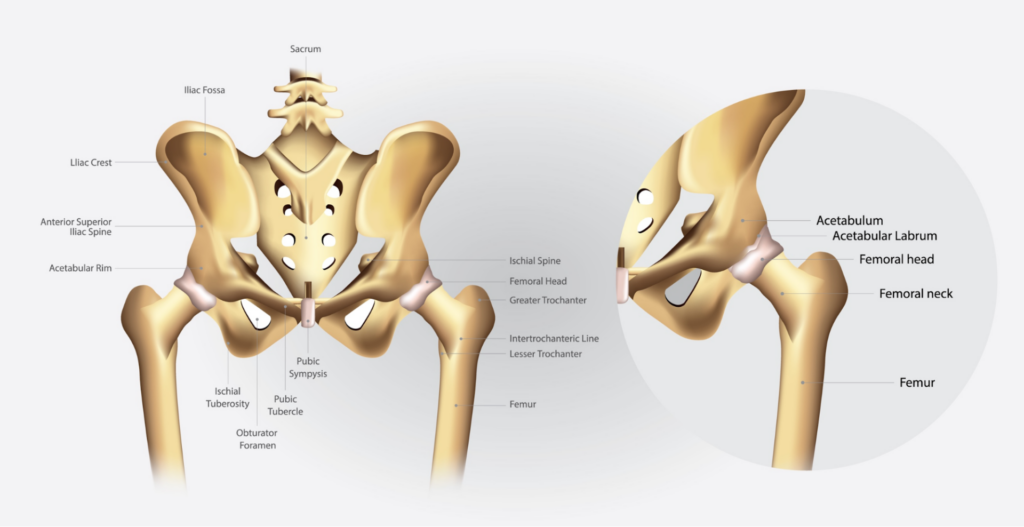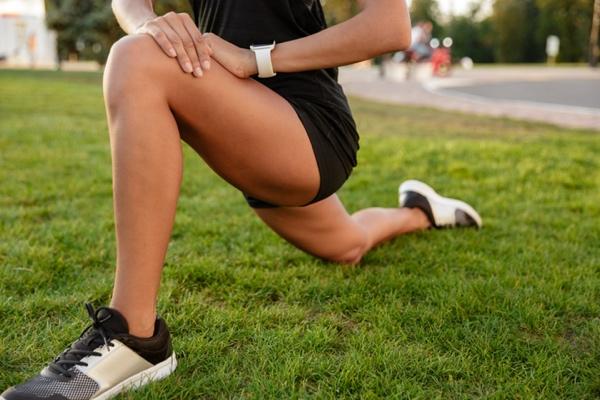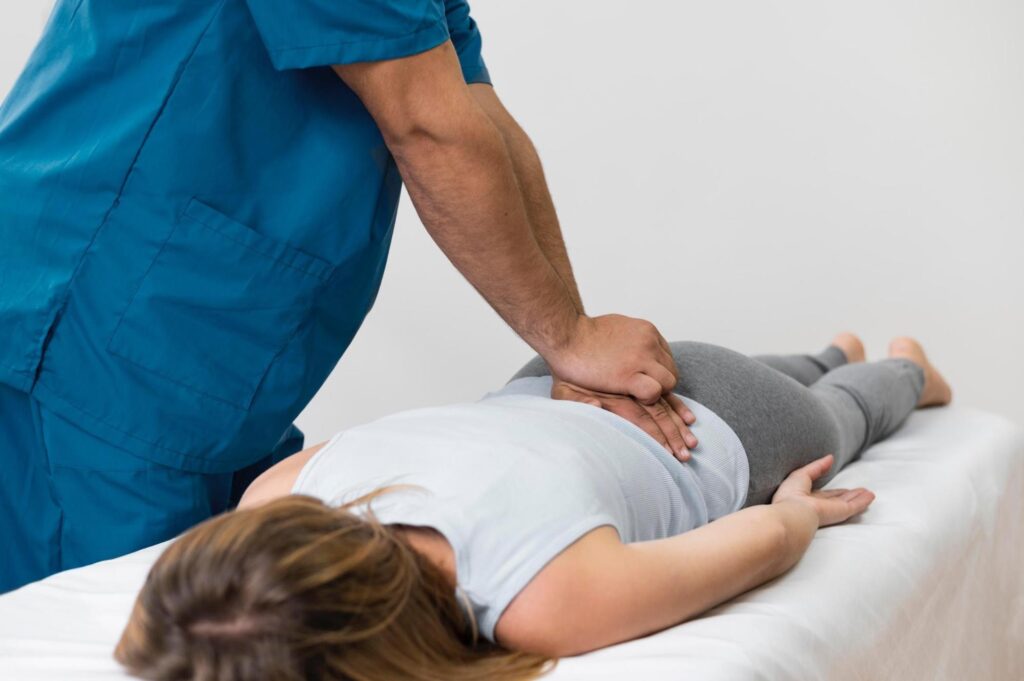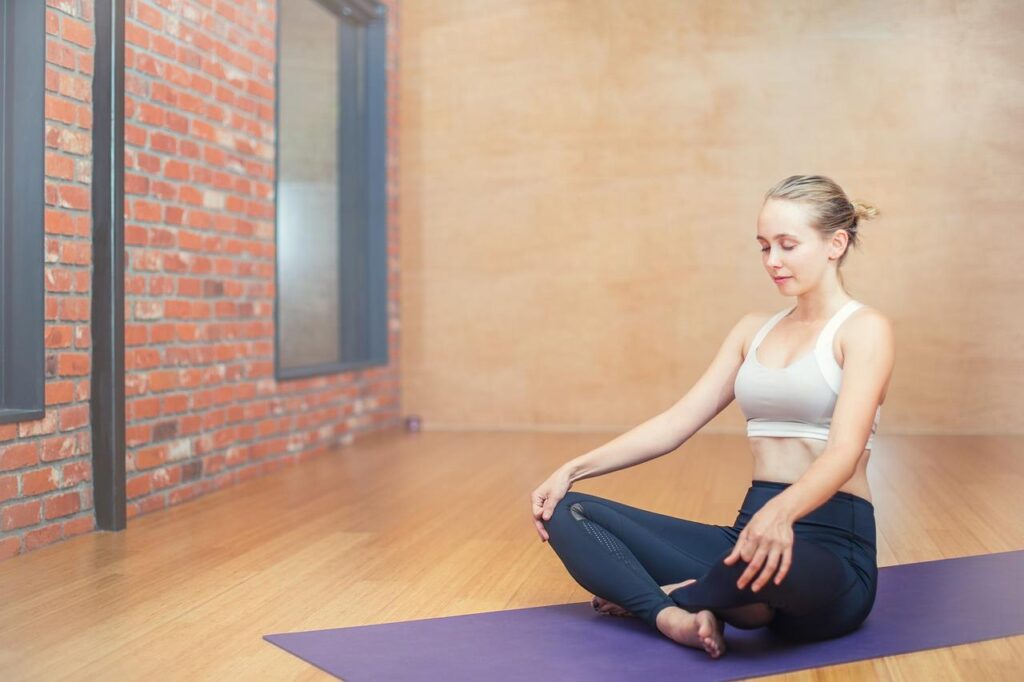Hip Bursitis: Symptoms, Causes, and Effective Treatment Options
Are you struggling with hip pain that won’t go away? If discomfort on the outer side of your hip affects your daily activities, it could be a sign of hip bursitis.
Hip bursitis is caused by irritation or inflammation of the bursa, making even simple tasks like walking or climbing stairs difficult. Fortunately, with the proper treatment, you can start feeling better and return to your routine.
What Is Hip Bursitis?
Hip bursitis causes pain on the outer side of the hip when the bursa, a small fluid-filled sac, becomes irritated or inflamed. This condition can make walking, climbing stairs, or even lying on one side uncomfortable.
Types of Hip Bursitis: Trochanteric vs Iliopsoas Bursitis
There are two main types of hip bursitis. Each is associated with its own symptoms and risk factors.

Trochanteric bursitis
Trochanteric bursitis is the most common type of hip bursitis. It affects the bursa that covers the bony point on the outside of the hip, which is called the greater trochanter.
Iliopsoas bursitis
Iliopsoas bursitis, also known as iliopectineal bursitis, affects the iliopsoas bursa near the groin, under the iliopsoas muscle.
Symptoms of Hip Bursitis
Hip bursitis typically causes pain in the hip area, which may start as a sharp discomfort and develop into a persistent ache. The pain often worsens with physical activity, prolonged sitting, or lying on the affected side. Some people may also experience swelling or tenderness around the hip.
Pain Location by Type
The location and nature of the pain can vary depending on the type of bursitis.
- Trochanteric bursitis: Pain on the outer side of the hip that may extend down the outside of the thigh.
- Iliopsoas bursitis: Pain felt in the groin or front of the hip, sometimes radiating to the upper thigh.
Other common symptoms include:
- Increased pain with movement: Activities such as walking, climbing stairs, or rising from a seated position can worsen symptoms.
- Tenderness and swelling: The affected area may be sensitive to touch, and some individuals may notice mild swelling.
- Pain when lying on the affected side: Sleeping on the painful hip can exacerbate discomfort.
- Stiffness or reduced range of motion: Some people experience difficulty moving the hip, especially after rest periods.
- In rare cases, nerve compression symptoms: Enlarged bursae from iliopsoas bursitis may press on the femoral vein, potentially causing additional discomfort or sensations in the leg.
Symptoms may vary in intensity, and recognizing them early can help guide appropriate treatment and management.
Common Causes of Hip Bursitis
Hip bursitis can develop for several reasons, including:
- Repetitive movements: Activities like running, cycling, or prolonged standing can put stress on the hip.
- Injury: A direct hit to the hip, such as from a fall, can lead to bursitis.
- Posture or gait issues: Poor posture or an uneven walking pattern can put extra strain on the hip.
- Muscle weakness or tightness: Weak hip muscles or tightness in the leg muscles can contribute to irritation of the bursa.
- Underlying conditions: Arthritis, spinal problems, or past surgeries can increase the risk of hip bursitis.
Risk factors for Trochanteric Bursitis
Certain activities, past injuries, and medical conditions can make some people more likely to develop trochanteric bursitis. Repeated stress on the hip or underlying inflammation can contribute to irritation of the bursa.
People at higher risk include:

- Athletes: Running, jumping, and other repetitive movements can put excess strain on the hip.
- Manual laborers: Jobs that involve frequent lifting, bending, or standing for long periods can increase wear and tear on the hip joint.
- Individuals with prior hip surgery: Surgical procedures may affect movement patterns or irritate soft tissues, sometimes leading to bursitis.
Certain health conditions can also raise the risk:
- Inflammatory arthritis: Conditions like gout and psoriatic arthritis can lead to joint inflammation that affects the bursa.
- Psoriasis: Chronic inflammation from this condition can extend beyond the skin, sometimes impacting soft tissues.
- Diabetes: Poor blood sugar control may slow tissue healing and increase susceptibility to inflammation.
- Thyroid disorders: Imbalances in thyroid hormones can contribute to joint and tissue irritation, which may affect the bursa.
Risk Factors for Iliopsoas Bursitis
Certain conditions, repetitive movements, and past surgeries can increase the likelihood of developing iliopsoas bursitis. Increased pressure in the hip joint or soft-tissue reactions may contribute to inflammation of the bursa.
People at higher risk include:
- Individuals with hip osteoarthritis: Wear-and-tear on the joint can lead to excess fluid buildup in the iliopsoas bursa.
- Total hip replacements: Soft-tissue reactions following surgery may contribute to bursitis for those with total hip replacements.
- Athletes and individuals with repetitive hip movements: Running, frequent bending, or other mechanical irritation can trigger inflammation.
- People with acute hip trauma: Direct injury or the presence of foreign bodies can lead to irritation of the bursa.
Certain medical conditions can also raise the risk:
- Rheumatoid arthritis: This condition is often associated with compression syndromes, where an enlarged bursa may press on nearby structures, particularly the femoral vein.
- Crystal arthropathies and pigmented villonodular synovitis: Inflammatory joint conditions that have been linked to iliopsoas bursitis.
- Metal-on-metal or polyethylene debris from hip arthroplasties: These materials may increase the risk of developing bursitis.
Preventing Hip Bursitis
To lower the risk of developing hip bursitis, consider the following:
- Warm up before activity: Stretching before exercise can help reduce strain.
- Strengthen hip muscles: A strong hip can better support movement and reduce irritation.
- Avoid repetitive stress: Varying activities can help prevent overuse injuries.
- Use proper posture: Sitting and standing with good alignment can reduce hip strain.
When to Seek Professional Help
Consulting a healthcare professional may be beneficial if hip pain disrupts daily activities or persists despite rest. A chiropractor, physical therapist, or other provider can help determine the best treatment plan for long-term relief.
While hip bursitis can be uncomfortable, the proper care can help most people manage symptoms and return to their routine.
Holistic Non-Surgical Treatment Options
At Prestige Health and Wellness, we utilize a combination of chiropractic care and specialized therapies to treat Hip Bursitis effectively. Our approach focuses on relieving pain, reducing inflammation, and addressing the underlying causes to prevent future flare-ups.
Treatment options may include:

Chiropractors can help address misalignments in the spine and pelvis that may contribute to hip pain. Adjustments and manual therapies may relieve pressure on the hip and improve movement.
- Spinal Adjustments: Correcting spinal misalignments to improve nerve function and reduce stress on the hip joint.
- Joint Mobilization: Enhancing the mobility of the hip and surrounding joints to alleviate pain and improve function.
- Soft Tissue Therapy: Targeting tight or imbalanced muscles around the hip to reduce tension and inflammation in the affected area.
Physical therapists can develop exercises to strengthen the hip and improve flexibility. Stretching and strengthening the surrounding muscles can help take stress off the bursa.
- Strengthening Exercises: Building strength in the hip, glutes, and thigh muscles to better support the hip joint and reduce pressure on the bursa.
- Stretching Routines: Increasing flexibility in the hip and surrounding muscles to relieve tightness and improve mobility.
- Proprioceptive Training: Improving balance and coordination to reduce the risk of further strain on the hip.
- Gait Analysis: Assessing and correcting your walking or running mechanics to prevent future inflammation.
Occupational therapists can help prevent daily activities from worsening symptoms and may provide strategies to move more efficiently and reduce strain on the hip.
Massage Therapy
Massage therapists can help release muscle tightness around the hip, improving blood flow and reducing inflammation.
Additional Medical Services
- Acupuncture: Easing pain and reducing inflammation through targeted acupuncture points.
- Cold Laser Therapy: Light therapy accelerates tissue repair and reduces inflammation.
- Orthotic Training: Providing custom orthotic devices to correct posture or leg-length discrepancies contributing to bursitis.
Find Relief from Hip Bursitis Today
Don’t let hip pain hold you back. Whether you’re dealing with discomfort from daily activities or recovering from an injury, professional care can help. Our team offers chiropractic care, physical therapy, and personalized treatment plans to reduce pain and restore mobility.
Visit us at one of our convenient locations: Financial District, Hudson Yards, Chelsea, or Nomad. Call us today at (917) 694-1565 or book your appointment online to begin your journey toward lasting relief and improved mobility!
Sources
Cleveland Clinic. (n.d.). Trochanteric Bursitis. Retrieved from https://my.clevelandclinic.org/health/diseases/4964-trochanteric-bursitis
Jonczy, M. L., Büchler, L., Mahenthiran, Y., Helfenstein, F., Apenzeller-Herzog, C., & Isaak, A. (2025). Epidemiology, clinical manifestation, diagnosis, and treatment of bursitis iliopectinea: A systematic review. SAGE Open Medicine, 13, 20503121251317899. https://doi.org/10.1177/20503121251317899
Seidman, A. J., Taqi, M., & Varacallo, M. A. (2024). Trochanteric Bursitis (Archived). In StatPearls. StatPearls Publishing.



